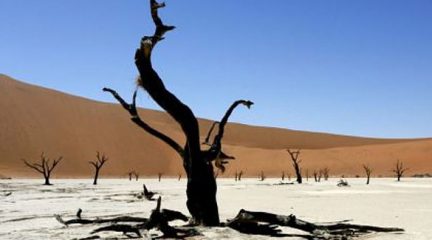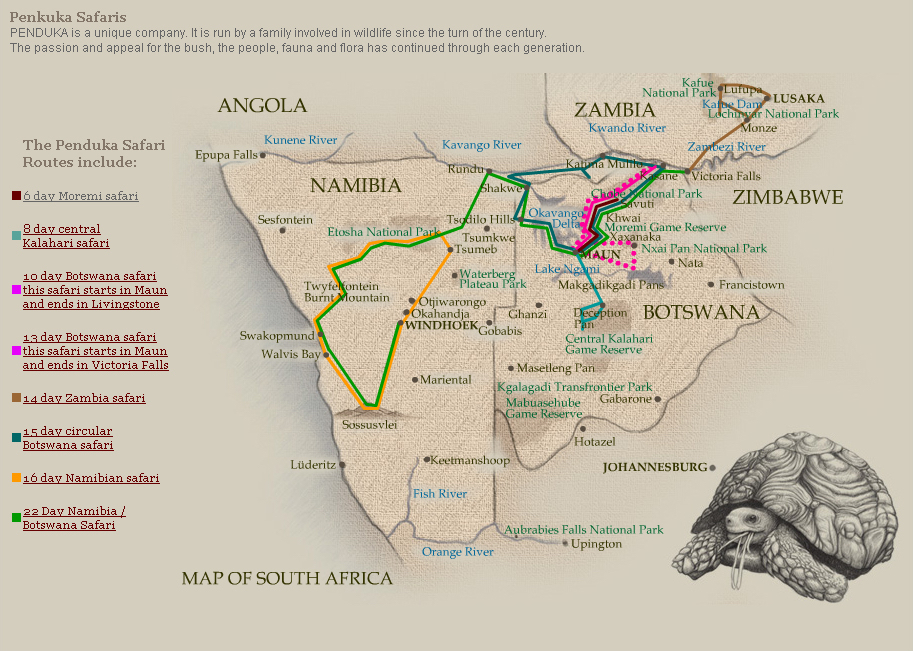16-Day Namibian Safari
16 Days, 15 Nights
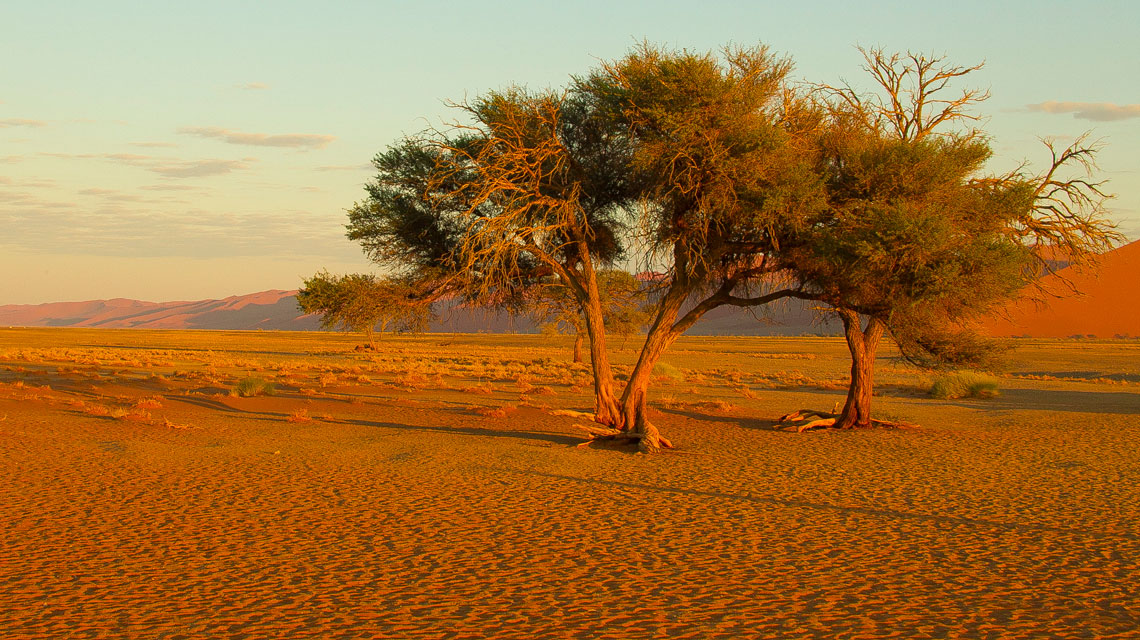
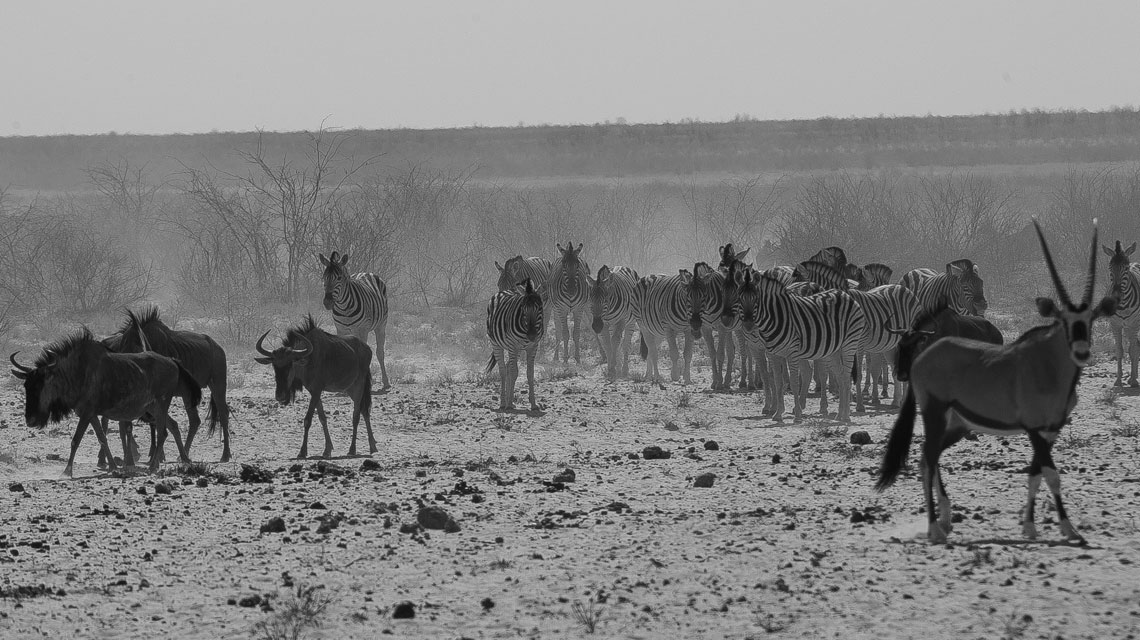
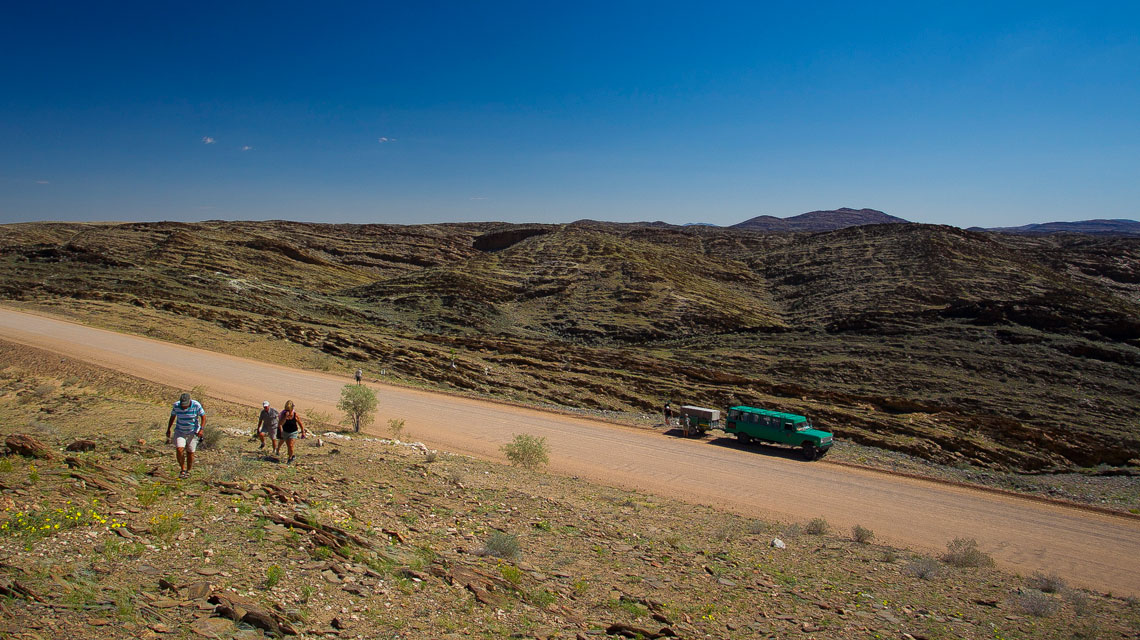
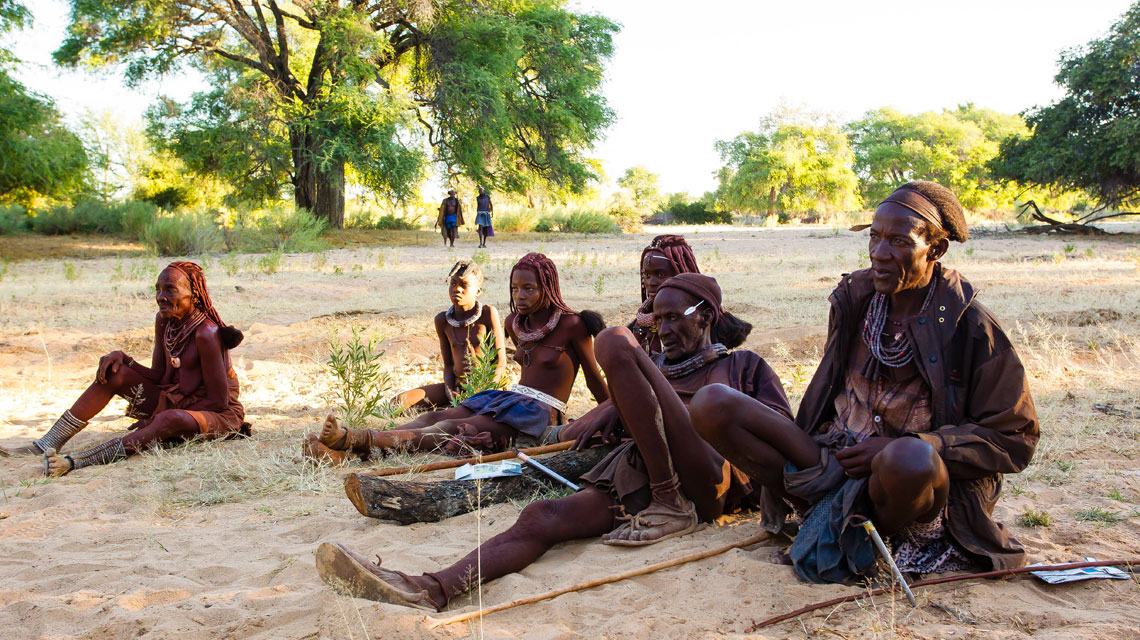
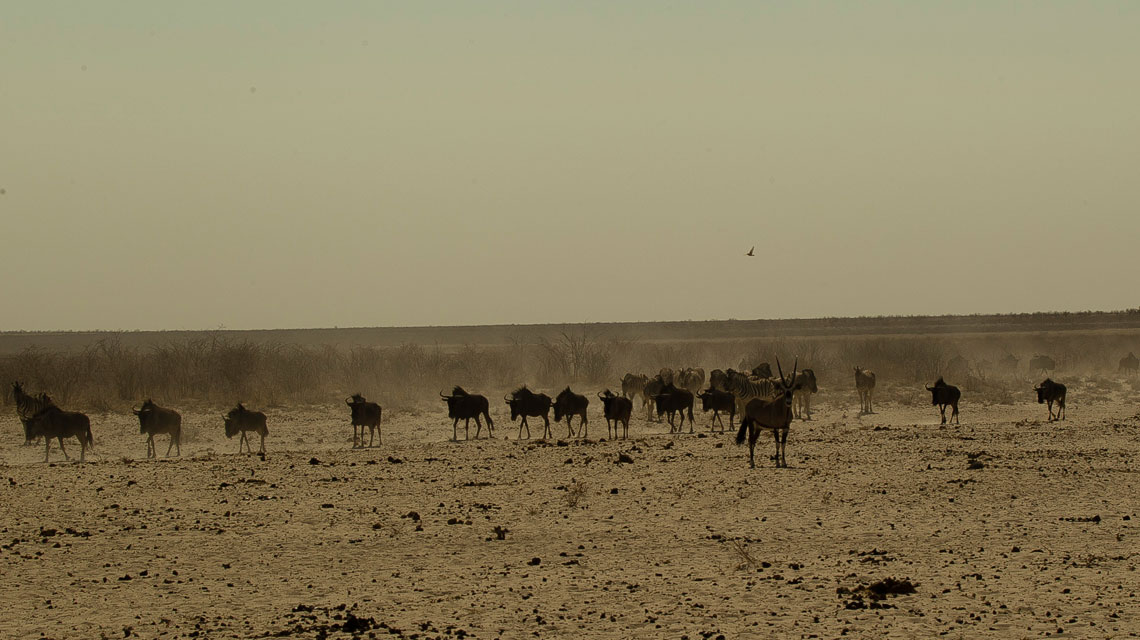
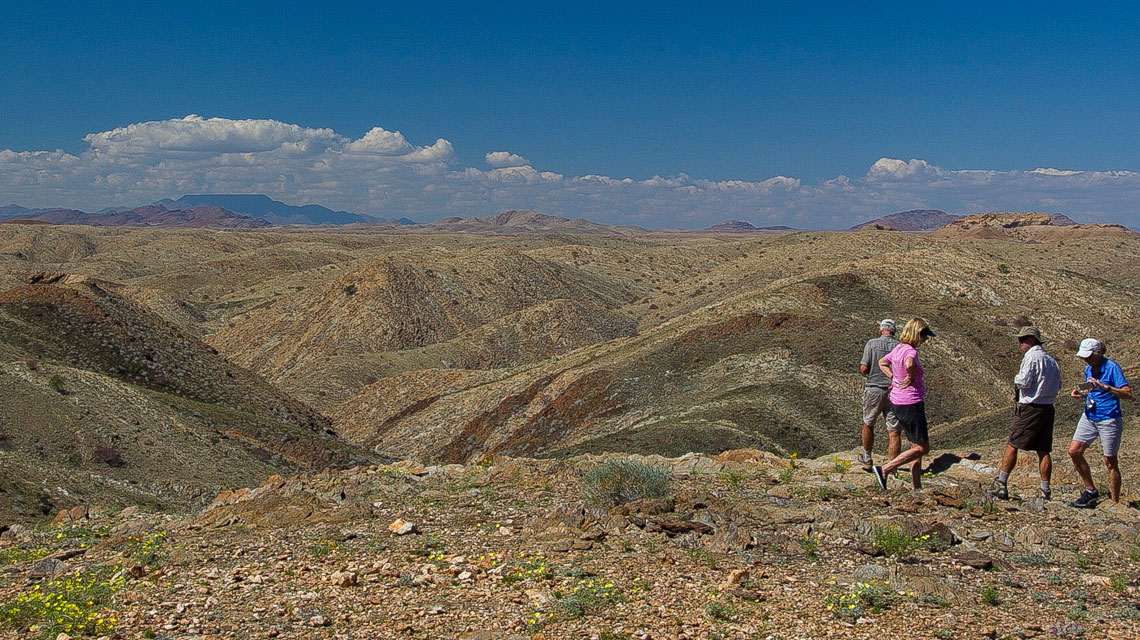

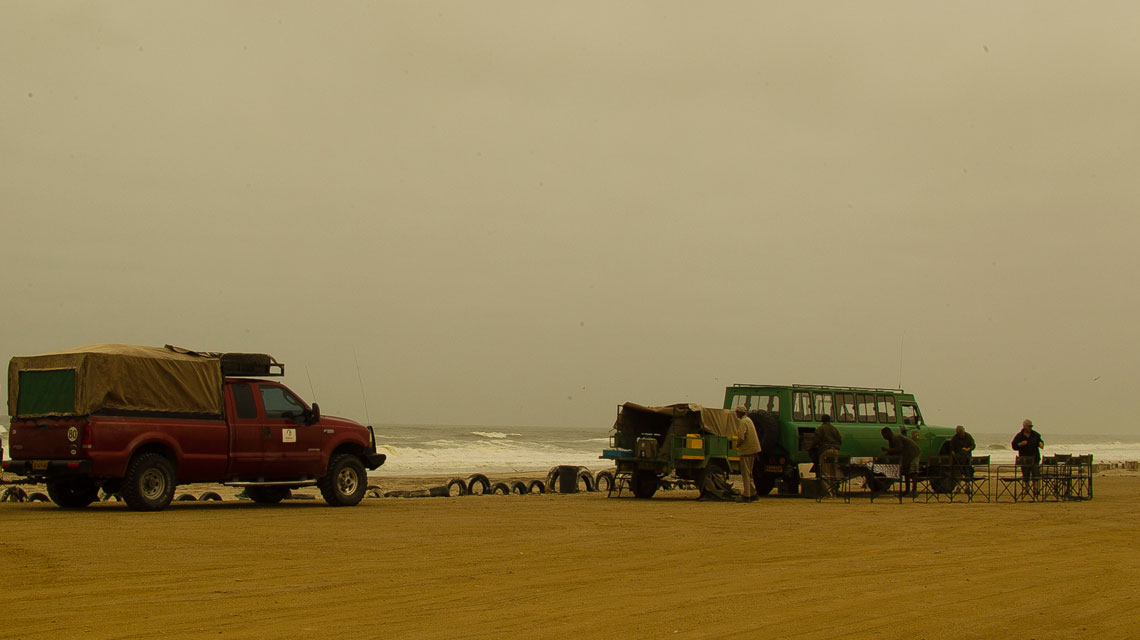

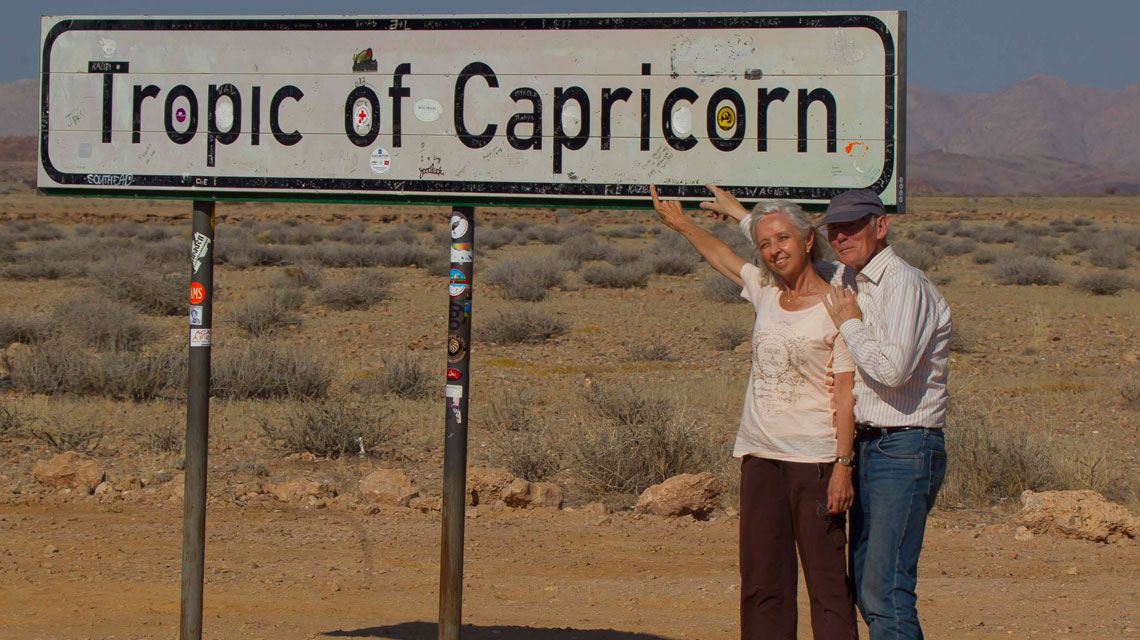
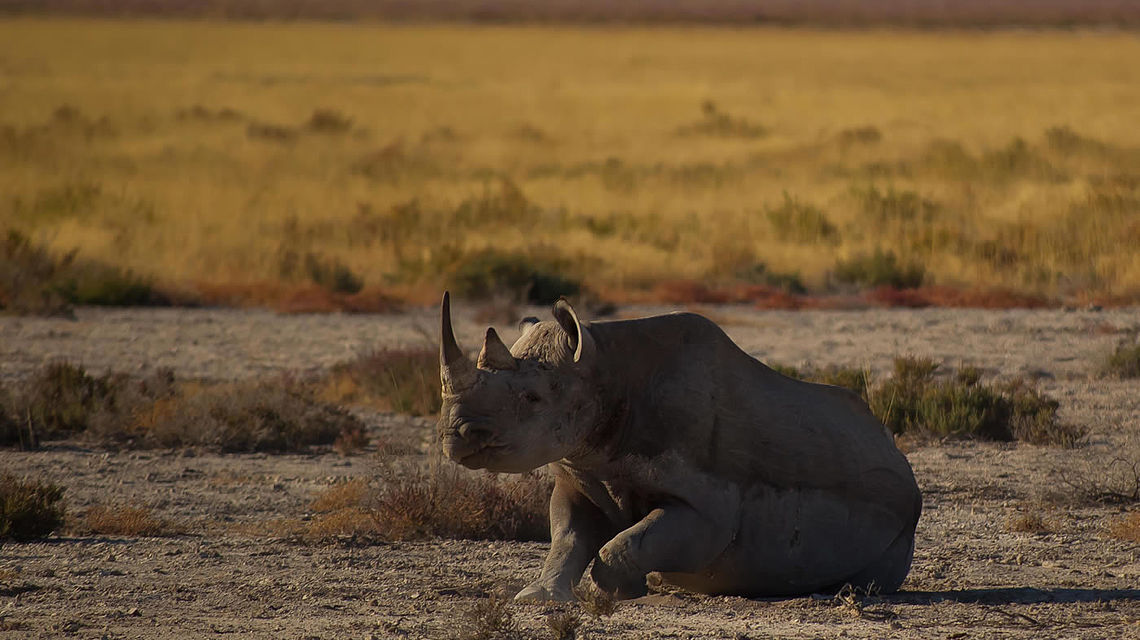
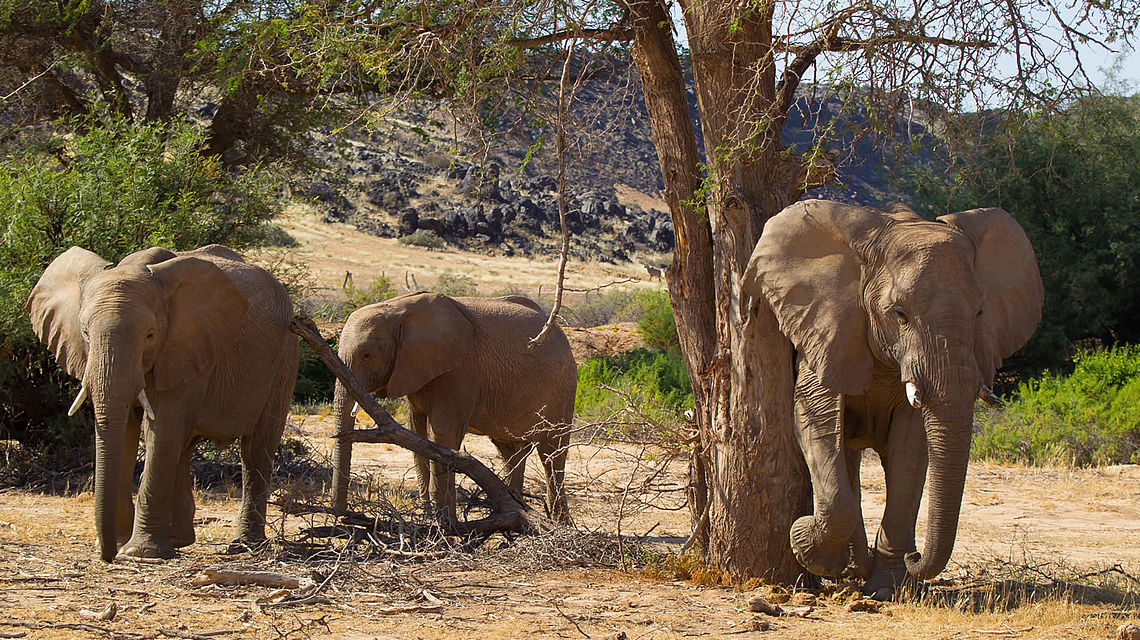
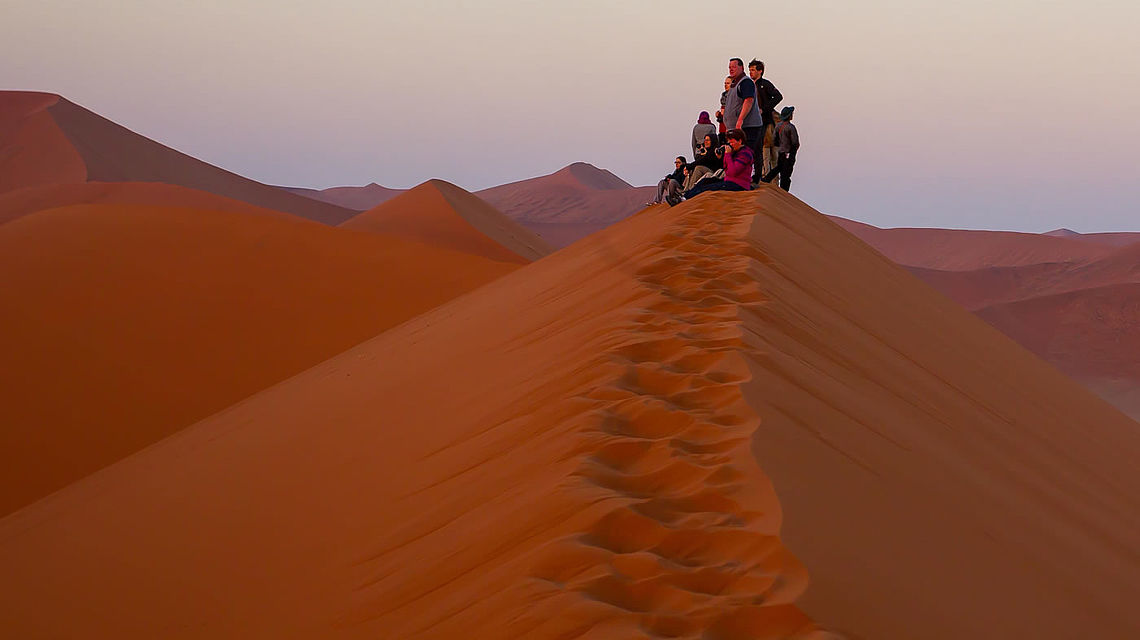
Travelling through the changing landscapes of Namibia we take you from the Waterberg National Park through Etosha National Park and north to the Epupa falls on the Kunene River. Traversing Kaokoland and Damaraland we stay in wilderness camps until we reach the coastal town of Swakopmund. The tall sand dunes of Sossusvlei are a just ending to Namibia’s inspiring scenery. As private safari on request only!
- Tour Itinerary -
PENDUKA meet group at Windhoek International Airport or at a guesthouse in Windhoek and we commence our safari to drive north to Okahandja. We will continue further until we will reach the Waterberg Plateau Park just 60km east of Otjiwarongo. The Plateau rises some 200 m above its surrounding area of African bush and savannah. The vegetation changes dramatically from acacia savannah at the foot of the plateau to lush-green sub-tropical dry woodland with tall trees and grassy plains at the top. Ten fern species have been recorded here, one being endemic to Namibia and Angola. The Resort has a well-equipped camping site and there is also a restaurant, kiosk, museum and a swimming pool.
Our route continues north through Otjiwarongo, Otavi and Tsumeb to arrive at the eastern gate into Etosha National Park. We reach our campsite at Namutoni with its historic fort, and catch the first glimpse of the vast Etosha Pan stretching out to the horizon. The Etosha National Park owes its unique landscape to the Etosha Pan, a vast shallow depression of approximately 5 000 km square. Of the 114 mammal species found in the park, several are rare and endangered, such as black rhino and black-faced impala. The elephant in this park is reputed to be of the largest in Africa, the tallest ones measuring up to 4 m at the shoulder. Their tusks, on the other hand, are relatively small, due to genetic defects and mineral deficiencies in their diet. Enjoy sundowners before dinner.
Leaving Namutoni after an early breakfast, we take a day-long game drive to observe spectacular wildlife activity around waterholes, where game concentrates during the dry season. Lunch stop en-route. We travel along the edge of the Etosha Pan and along famous and varied game routes, before reaching Okaukuejo campsite. The waterhole at Okaukuejo is floodlit at night and spectacular sightings are almost guaranteed. Lions, elephants and black rhino come to quench their thirst almost every night.
We leave the Etosha National Park along densely populated game routes to reach the exit gate at Otjavasondu in the extreme west of the park. Camp in the wilderness at the confluence of the Otjavasondu and Ombonde Rivers in the wild. A game walks to look for springbok, gemsbok, kudu, giraffe and elephants, and we can climb a hill in this area to watch the sun set over Koakoland.
An early breakfast and we depart on a day?s drive north through Koakoland. Our route takes us far north via Opuwo to the breathtaking Epupa Falls on the Kunene River. Set up camp for two nights at the falls. We visit Himba villages to observe the lifestyle of this friendly, once nomad people. The falls are a series of cascades where the Kunene River drops a total of 60 m over a distance of about 1.5 km. The area with its richly-coloured rock walls, wild fig, baobabs and multitude of birds promises to be an rewarding experience.
We leave the falls and we travel south through the heart of Koakoland. There may be a chance to swim at the Ongongo Falls. The Fort at Sesfontein has been a ruin for many years has only been reconstructed almost a 100 years after it was first built. It also at some stage posed as a police station for the Schutztruppe.
An early start in search of desert elephants, which are occasionally seen in this region. Back to camp for brunch, before our journey takes us further south via Palmwag into the changing landscape of Damaraland to reach the Aba-Huab River. Find a good place to set up our wilderness camp.
Spend the morning exploring one of the largest collections of rock engravings discovered as yet, at Twyfelfontein and visit Burnt Mountain as well as other places of interest in the area. In the afternoon a drive along the Aba-Huab River bed in search of desert elephant and rhino. Return to camp to relax in our wilderness campsite.
Leave the Twyfelfontein area to continue our journey through the vast Pro Namib to reach the Ugab River near Brandberg West, an area where we hope to see the desert elephant, and where we can photograph the oldest of desert plant life, the Welwitchia Mirabili.
After an early breakfast we pack and leave Ugab camp to continue our journey towards the coast. We visit the historical site of Cape Cross, home to some 80,000 seals and drive south viewing some of the largest lichenfields worldwide. Reach the quaint and historic town of Swakopmund. Swakopmund is known as Namibia?s seaside resort on the West Coast and is a place of singular charm and resembles a small Bavarian village nestled between the desert and the sea. It has a relaxing atmosphere with promenades, palm trees and beautiful tended public gardens.
An early start to this day, to make the most of the various options available in the coastal towns of Walvis Bay and Swakopmund. We drive to Walvis Bay to see the bird life, flamingos and pelicans in the harbour. An optional boat cruise into Walvis Bay Harbour gives you a chance to see the Cape fur seals and Bottle nose or Heavy side dolphins. In the afternoon you can visit the Museum, rug making industry and other places of interest in Swakopmund or we can drive up the spectacular Swakop River.
Leave the coast to drive through the Namib Naukluft Park and observe the rich diversity of desert adapted fauna and flora, including the welwitchia plant. Stop for lunch en route. Passing through Solitaire we reach Sesriem campsite situated on the edge of the Namib Naukluft Park. Time to relax, rest and shower. Campfire dinner.
Early morning visit Sossusvlei. This is the top destination in the Southern Region, with its towering dunes, the highest of which has been measured from its base as being 325 m. The dunes have been formed through natural forces. Visit the Sesriem canyon in the afternoon. Farewell dinner.
Depart as early as possible for Windhoek and ascend the Spreetshoogte Pass leaving the low-lying Namibian plains behind. We reach Windhoek International Airport in time for late afternoon outbound flights. (Alternatively overnight in Windhoek guesthouse to connect with outbound flight the following day).
- 2024 Departures & Rates -
Dates: As a private safari on request only
Low season rates: USD 8 000.00 pp sharing / Single supplement Euro 900.00
High season rates: USD 8 000.00 pp sharing / Single supplement Euro 900.00
- 2026 Departures & Rates -
Dates: As a private safari on request only
Low season rates: USD 8 000.00 pp sharing / Single supplement USD 750.00
High season rates: USD 8 000.00 pp sharing / Single supplement USD 750.00

